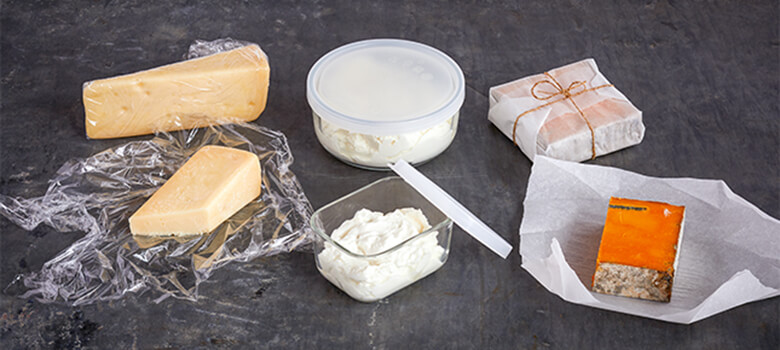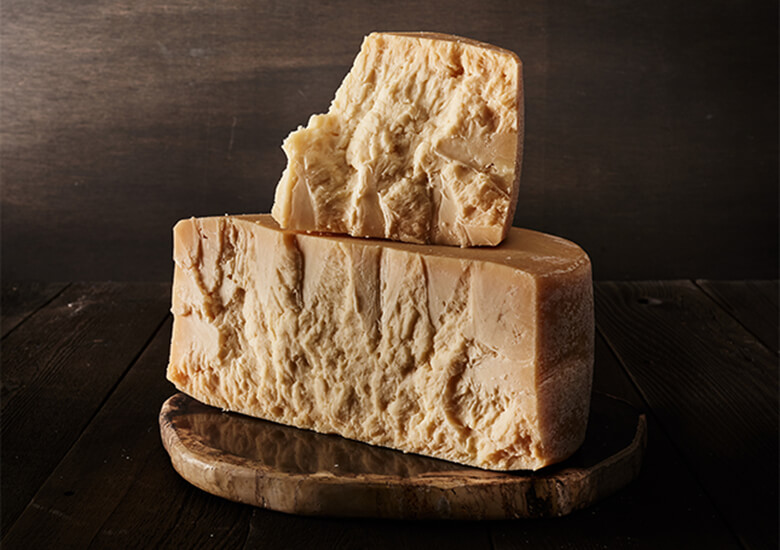How Long Can Cheese Sit in the Fridge
We've all been there, satisfied and full of cheese, gazing upon uneaten precious remnants of cheddar and gouda. Maybe you prepared a summertime cheese board for friends, or a delicious steak and blue cheese wrap for yourself. Once you've finished your meal, you realize there's some scrumptious cheese left over that needs to be stored. Don't panic, cheese lovers--we've got you covered.
The Three C's of Cheese Storage
Congratulations, you are now the proud parent of some cheese! Here are some quick lessons on how to keep the newest (and tastiest) member of your fridge happy. Let's start with the overarching principles: the three C's of cheese storage.
CLEAN: cheese absorbs other flavors, so keep yours away from aromatic foods
COLD: most cheeses are comfortable between 34 and 38 degrees
COVERED: Cheese loses flavor and moisture when exposed to air, so make sure to keep it covered with parchment paper
With those three guiding rules, let's dive into some deeper lessons on cheese storage.
3 Important Lessons of Cheese Storage

Lesson #1: Don't Suffocate Your Cheese
This may come as a shock to budding cheese fanatics, but the first rule of cheese storage is to generally avoid wrapping your cheeses in plastic wrap.
That cheese you just bought? It's alive. That's right, cheese is made up of living, breathing organisms. Like any living thing, cheese needs air to breathe.
While you might be tempted to just wrap your cheese tightly in plastic wrap and call it a day, this would be a mistake.
Cheese is mostly made up of oil and fat, and so it takes on the flavor of its surroundings. You might be asking why cheese in stores is often wrapped in plastic. The answer is that this cheese only stays wrapped for short periods—often just a few days between wrapping, sale, and consumption—minimizing the impact of the plastic wrap.
So, what should you wrap around your cherished cheese?
Our top recommendation is cheese paper. Cheese paper allows your cheese to have some breathing room without being totally exposed and losing its precious moisture. Don't fret if you don't have cheese paper on hand. You can also wrap your cheese in parchment paper and gently tape it closed, giving your cheese a comfortable and breathable home that won't impart any negative flavors.
Lesson #2: Different Storage for Different Cheeses
There's a huge variety of cheese out there, all with different tastes and textures, each kind perfect in its own way. Each type of cheese has its own shelf life and storage best-practices. Let's review some of the rules with different cheeses:

Hard cheeses (e.g. parmesan) have less moisture to lose and can safely be stored for up to six weeks after opening. Cheese paper is still ideal, but plastic wrap can be used for short-term storage.

Semi-hard cheeses (e.g. cheddar or gouda) are middle-of-the-road in moisture and can be safely stored for about four weeks after opening. You'll want to use cheese paper here.

Soft or fresh cheeses (e.g. ricotta or gorgonzola) are high in moisture and can safely be stored for about two weeks after opening. These cheeses are best stored in clean, airtight containers.
Lesson 3: Where to Keep Your Cheese
Most cheeses like higher temperatures and humidity levels than the rest of your refrigerated goods.
A great place to keep your cheeses is in the produce drawer.
The higher temperatures and humidity will keep your cheeses moist and flavorful for longer, and you'll also get the benefit of separating your cheeses from other foods that could impart unwanted flavors. This is especially important for soft or fresh cheeses that stand to lose a lot of moisture.
Ready, Set, Store
Now that you're armed with all the lessons and key principles of cheese storage, you'll be able to keep your favorite cheeses fresh for that much longer. When in doubt, remember the three C's of cheese storage: clean, cold, and covered. Looking to connect with your fellow cheese lovers? Join us on Facebook and Instagram and become part of the world's largest cheese community. Explore a universe of cheese at your fingertips.
FAQs: Cheese Storage
Can you freeze cheese?
Freezing cheese can ruin the original texture and taste you know and love. However, some cheeses are more resilient to freezing than others. Cheeses like parmesan or packaged shredded cheeses can be frozen for 2-3 months and are best used crumbled or shredded after thawing.
Refer to these cheese-freezing best practices:
1) Break up larger pieces of cheese into pieces weighing half a pound or less
2) Use vacuum-sealed, moisture-proof containers so cheeses don't lose moisture
3) Thaw slowly in the refrigerator to minimize changes in texture
Is moldy cheese safe to eat?
It depends on the cheese. For soft or fresh cheeses like ricotta, mold means it's time to discard. In semi-hard or hard cheeses like cheddar or parmesan, mold can't penetrate far into the cheese. Cut away an inch below and around the moldy spots and continue to enjoy.
What temperature should cheese be served at?
Most cheese is best enjoyed around room temperature (67-70°F degrees) so it's a good idea to take cheese out of the refrigerator around 30 minutes before consuming. Soft cheeses will heat up faster while hard cheeses will stay cool longer.
Can I eat cheese past the expiration date?
Most cheeses come with a "best if used by" date as opposed to an expiration date. With proper storage cheese can be safely enjoyed weeks after its "best if used by" date. Soft cheeses should be consumed sooner after opening compared to hard cheeses, which will stay fresh for longer.
How long can cheese be left out of the refrigerator?
Cheese can be safely enjoyed at room temperature for around two hours. Unfortunately, soft or fresh cheeses should generally be discarded after two hours, with no hard rind for protection these cheeses are more likely to spoil. Thankfully, hard cheeses can be lovingly wrapped and refrigerated again for future enjoyment. Keep in mind that when cheese is heated and cooled repeatedly it can impact the texture and flavor negatively.

How Long Can Cheese Sit in the Fridge
Source: https://www.wisconsincheese.com/the-cheese-life/article/36/how-to-store-cheese